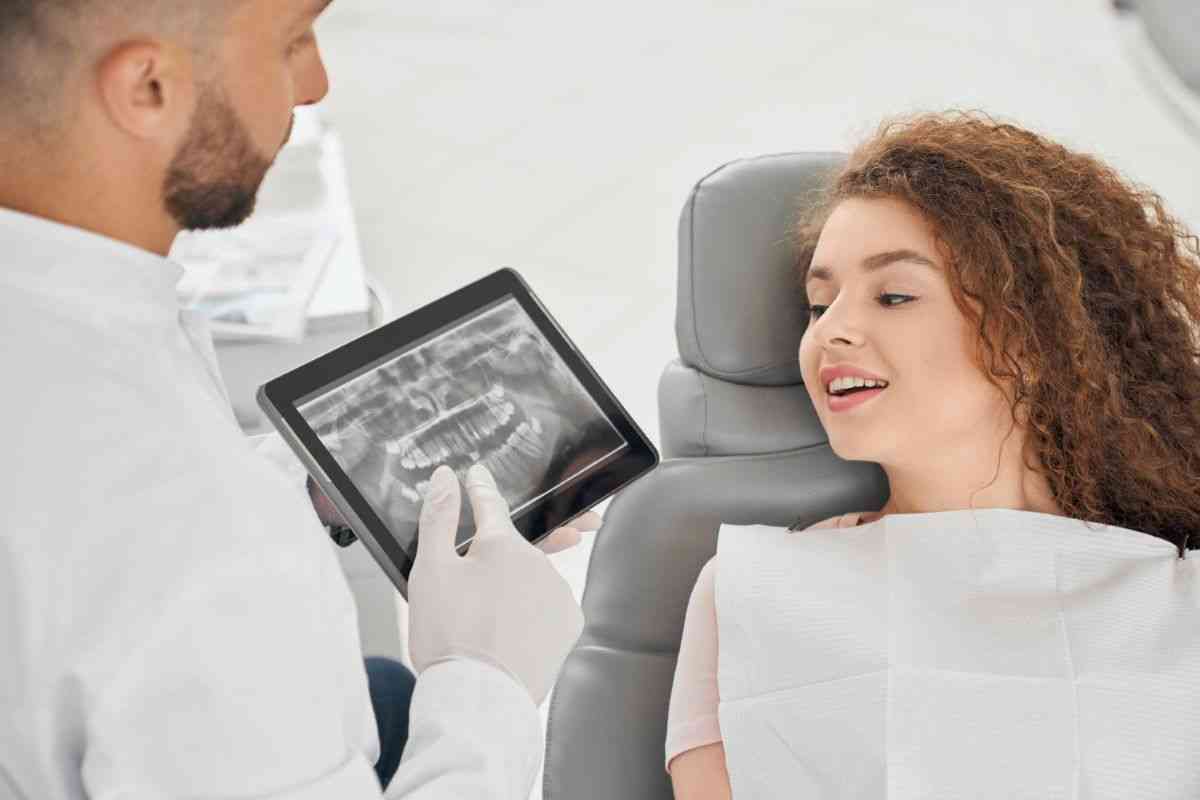
Pediatric dentistry is a subspecialty focusing on children’s dental health from infancy to puberty. Dental X-rays are essential to juvenile dental treatment because they help diagnose oral health concerns that may not be apparent during a regular dental checkup.
While dental X-rays are a vital tool in delivering comprehensive treatment, parents and caregivers are understandably concerned about safety and radiation exposure. In this article, we will look at the significance of dental X-rays in pediatric dentistry, as well as the safety precautions used by pediatric dentists and techniques to reduce radiation exposure.
The Role of Dental X-Rays in Pediatric Dentistry
Pediatric dental X-rays, commonly known as radiographs, show comprehensive pictures of a child’s teeth, jawbones, and oral tissues. These pictures enable children dentists to detect and diagnose various oral health disorders, including cavities, developmental anomalies, impacted teeth, and probable jawbone problems. Dental X-rays are an essential diagnostic tool for developing individualized treatment programs, assessing oral growth, and treating dental issues as soon as possible.
Unlike adults’ teeth, children’s teeth are still developing, and their mouths are continually changing. Dental X-rays assist pediatric dentists in monitoring a child’s tooth growth and development, ensuring that any possible concerns are recognized early on. Pediatric dentists can give suitable treatments that may avoid more severe dental difficulties by diagnosing tooth abnormalities at an early stage.
If you are seeking safe and effective pediatric dental care for your child, rest assured that you are in good hands with Junior Smiles of Stafford – a leading pediatric dentist in Fredericksburg, VA. They follow the best practices outlined by the ADA and the AAPD to ensure the safety and well-being of our young patients. They use state-of-the-art X-ray equipment and employ strict safety measures to minimize radiation exposure during dental X-rays. Schedule a dental check-up with them today to provide your child with a lifetime of healthy smiles!
The Safety Measures Implemented by Pediatric Dentists
Lead Aprons and Collars
Pediatric dentists use lead aprons and collars to protect a child’s thyroid gland, chest, and other essential organs from unwanted radiation exposure. These shields are intended to prevent X-rays from reaching parts of the body that do not require imaging.
Proper X-Ray Technique
Pediatric dentists are trained to use cutting-edge X-ray equipment and practices that considerably decrease radiation exposure. Compared to traditional film-based X-rays, digital X-ray technology provides lower radiation exposure.
Limiting X-Ray Frequency
Pediatric dentists only prescribe dental X-rays when a precise diagnosis and treatment plan are required. The frequency of X-rays is determined by a child’s specific oral health needs and risk factors.
Individualized Approach
Before recommending X-rays, pediatric dentists evaluate each child’s oral health and history. The choice to take X-rays is based on the age of the child, their dental health state, the risk of cavities, and the existence of any oral health disorders.
Minimizing Radiation Risk in Pediatric Dental X-Rays
Even though dental X-rays are usually harmless, parents may be concerned about radiation exposure. However, the risk of radiation connected with dental X-rays is small, especially with contemporary safety procedures in place. Furthermore, pediatric dentists take extra steps to reduce radiation exposure.
As Low as Reasonably Achievable (ALARA) Principle
Pediatric dentists adhere to the ALARA principle, which states that radiation exposure should be kept “as low as reasonably achievable” while still getting critical diagnostic information. This method guarantees that X-rays are only used when necessary and that the dosage is kept as low as feasible.
State-of-the-Art Equipment
Pediatric dentists invest in modern X-ray technology that produces high-quality pictures while emitting reduced radiation levels. Digital X-rays utilize up to 80% less radiation than traditional film X-rays.
Risk Assessment
Pediatric dentists do a comprehensive risk evaluation before ordering dental X-rays. This examination considers a child’s age, dental history, the appearance of symptoms, and the possibility of oral health problems.
Alternative Diagnostic Tools
Pediatric dentists may employ alternate diagnostic methods in some circumstances to eliminate the necessity for X-rays. Intraoral cameras and laser-based technology, for example, can give significant information without radiation.
Fast Film or Digital Sensors
Pediatric dentists take X-ray pictures using fast film or digital sensors that require minimal exposure time. This decreases the radiation exposure to the child during the X-ray treatment.
Rectangular Collimation
Rectangular collimation is a technique used by pediatric dentists to reduce the size of the X-ray beam and focus it solely on the area of concern. The radiation that scatters outside the intended region is reduced by shrinking the X-ray beam.
Conclusion
Pediatric dental X-rays are essential for diagnosing and addressing oral health issues in children. They provide valuable insights into a child’s oral development and aid in creating personalized treatment plans. Pediatric dentists prioritize the safety of their young patients by adhering to strict safety protocols and employing advanced X-ray technology.
Following the ALARA principle and using state-of-the-art equipment, pediatric dentists can provide high-quality dental X-rays with minimal radiation exposure. Parents can feel confident that dental X-rays, when recommended by a pediatric dentist, are a safe and crucial part of their child’s overall oral health care.
Image by ArtPhoto_studio on Freepik
Follow me down the rabbit hole!
I'm Alice and I live with a dizzying assortment of invisible disabilities, including ADHD and fibromyalgia. I write to raise awareness and end the stigma surrounding mental and chronic illnesses of all kinds.
Dr. Wilson graduated from Rosalind Franklin University of Medicine and Science and completed her residency in Internal Medicine at Advocate Good Shepherd Hospital in Barrington, IL. Dr. Wilson specializes in providing culturally competent and trauma-informed care to patients with physical disabilities. In addition to her private practice, she works as a science communicator, teaching health literacy to middle school and high school students in her local school district.











